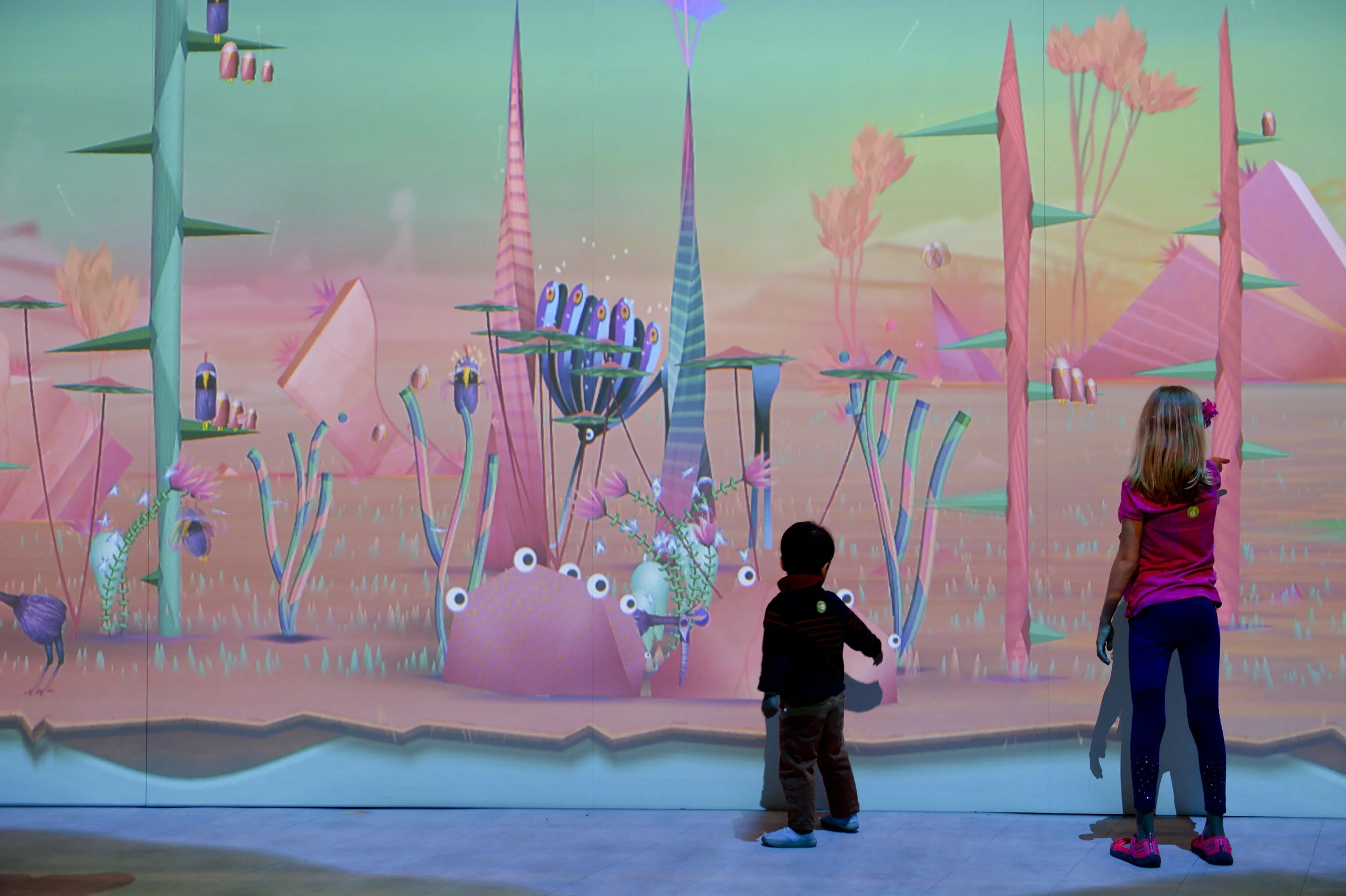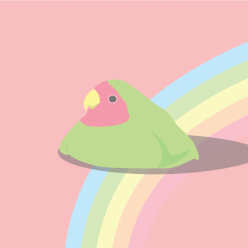About
Connected Worlds is an immersive, large scale installation of an ecosystem located at the New York Hall of Science by Design I/O. It is composed of six interactive walls of ecosystems that are connected together by a 3000 sqft interactive floor and a 14m high waterfall. Participants are involved in growing and sustaining the ecosystem through the actions they make. One way of sustaining the ecosystem is to direct the stream on the floor from the waterfall to the ecosystems by using logs to block and direct the water flow. They are also able to plant seeds to grow the ecosystems.

According to Theo Watson, the co-founder of Design I/O, the purpose of this installation is for the kids to interact not only in one environment but in a world where everything is connected. The idea where one local action can lead to another that may cause global implications is what they wanted to convey through this installation.
Reflection & Thoughts
If I were a child at Connected Worlds, I will be fully immersed in the installation! I would imagine my senses to be engaged with the installations, whether it is seeing how my seed will grow into a tree by using my hands, or just admiring how colourful the made-up animals and plants are. A child’s development is often paired or combined with play, where they are able to learn cognitive, linguistics, and social skills. They are also starting to make sense of the world around them by learning from the experiences that they have gone through while playing. I feel that this installation is a good example of a guided play, where the adult is able to target specific areas of development for the child. In this case, the child is learning to be conscious of their own decisions and actions that lead to different outcomes.

The installation is very engaging as the participant is able to see an almost immediate response to their actions. The tracking system that they have used is well thought of which shows in the seamless response that the participants get when interacting with the walls and the floor. In the real world, we are not able to see the implications of our choices immediately. (E.g. using plastic takeaway cups are convenient, but it contributes to the ever-increasing landfill that is harmful to the environment.) In contrast, this installation enables a child to understand the importance of thinking through their actions for the environment as they are able to see a response to their actions almost immediately.
While I feel that this installation helps a child to understand our world a little better, I do believe that having an outdoor excursion that exposes them to elements of nature in the learning process will also aid in the child’s development and understanding of sustainability better. Although this installation teaches a child to be conscious of their actions, I believe that the outdoor excursion will give them a real feel to how nature is like, that it’s not always clean and immediate like the exhibition that they experienced.
Lastly, I am very impressed with how seamless the whole process of tracking the input and showing the results is. Connected Worlds intrigued me on learning more about interactive devices, and to take note of every single aspect of a participant’s interaction to make the experience as smooth and engaging as possible.
References:
https://www.design-io.com/projects/connectedworlds
http://citeseerx.ist.psu.edu/viewdoc/download?doi=10.1.1.608.6539&rep=rep1&type=pdf
https://www.ukessays.com/essays/young-people/theories-surrounding-learning-through-play-young-people-essay.php
https://www.pentagonplay.co.uk/news-and-info/psychology-learning-through-play
https://nysci.org/wp-content/uploads/CW-FieldGuide12-12.pdf

